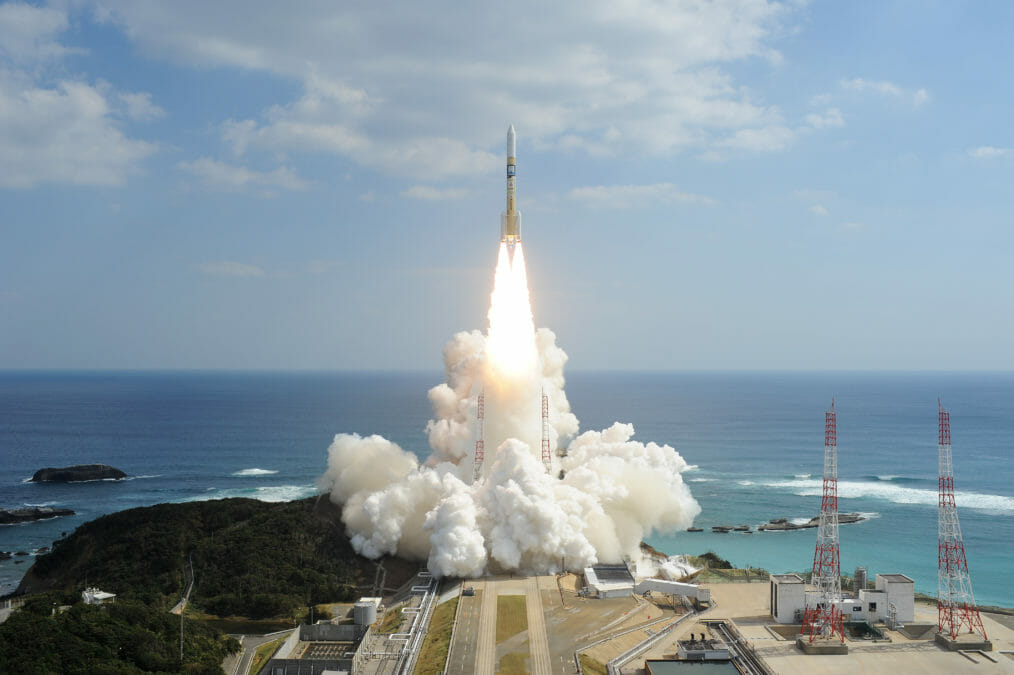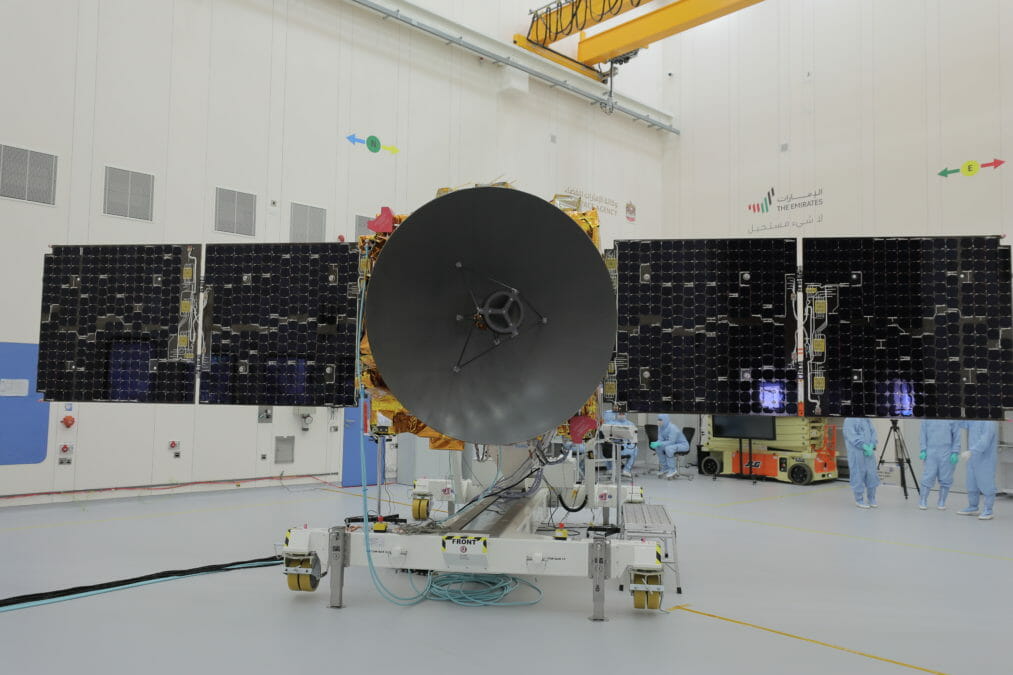For the team of scientists and engineers in the UAE, the pending launch to Mars aims to build the first full picture of Mars’ climate throughout the Martian year, with an expected arrival date of February 2021 for the Mars Hope probe. Coming as a result of six years of knowledge transfer and development, a major aspect of the Emirates Mars Mission project is the sharing of Martian data within the wider scientific community.

The initiative, based at the Mohammed bin Rashid Space Centre and supervised by the UAE Space Agency, has been operating in partnership with universities in the United States, which has aided the design process, as well as knowledge transfer and development.
Hessa Al Matroushi, science data and analysis lead, explained the importance of these partnerships in leveraging Martian data, allowing for better understanding of Mars’s atmosphere, and contributing to the global scientific community.
“To achieve our objectives, there are a lot of capabilities within the UAE that need to be developed from the scientific and engineering sides,” explained Al Matroushi. “The space centre has the capabilities to build its own Earth observation satellite, but we had never carried out missions to another planet. This brings complexities, knowledge to gain and capabilities to enhance in aid of this process.
“This is why we’ve established partnerships with three universities in the United States: the University of Colorado, the University of California, and Arizona State University. These are knowledge transfer partnerships, where we work together and combine our experiences when it comes to developments.”
Why collaboration is the key to true business intelligence
Collecting data
The Mars Hope Probe carries three scientific instruments, which will be used to collect Martian data:
- The Emirates eXploration Imager (EXI), a digital camera that will capture high-resolution images of the Red Planet, as well as measuring water, ice and ozone in the lower atmosphere.
- The Emirates Mars InfraRed Spectrometer (EMIRS), which will measure global distribution of dust, ice cloud and water vapour in the lower atmosphere.
- The Emirates Mars UltraViolet Spectrometer (EMUS), which will measure oxygen and carbon monoxide in the thermosphere, as well as the variability of hydrogen and oxygen in the upper atmosphere.
“The combination of these three instruments will give us unique data that we haven’t dealt with before,” said Al Matroushi. “In order for us to use it, we’ve engaged in scientific research projects, which include mentors who guide us forward, and we either use simulated data or other space missions’ data that we believe will be similar to the data we will get.”
Moving from collecting data to running business intelligence
As for the software that is being used within the probe, this needs to be highly autonomous in order to convey real-time information from Mars back to the space centre. This includes possible incidents that may occur, such as a loss of trajectory control and system failure.
Minimising impact of these potential incidents means having scenarios pre-programmed into the probe to ensure effective recovery.
Inspiring the future
Looking beyond getting to Mars, the Emirates Mars Mission aims to inspire young Emirati citizens to take up STEM subjects while in education, as well as giving aspiring scientists and engineers throughout the UAE.
“The mission aims not only to develop the scientists, engineers and researchers within the space centre, but also to extend influence to the community around us,” said Al Matroushi.
“We have set up many scientific outreach programs that will help to develop universities, as well as workshops for the general public to help enhance their knowledge, teach them what we know, and engage them in the mission as much as we can, especially when it comes to scientific analysis.
“Data will be available to everyone free of charge, and this will be updated constantly, so we would like the community to be able to handle this data and make scientific conclusions out of it, depending on their interest when it comes to Mars and the scientific objective.”
The Mars Hope Probe was launched from Tanegashima on the 20th July 2020 at 1:58am UAE time, following delays due to unstable weather conditions at the launch site.








